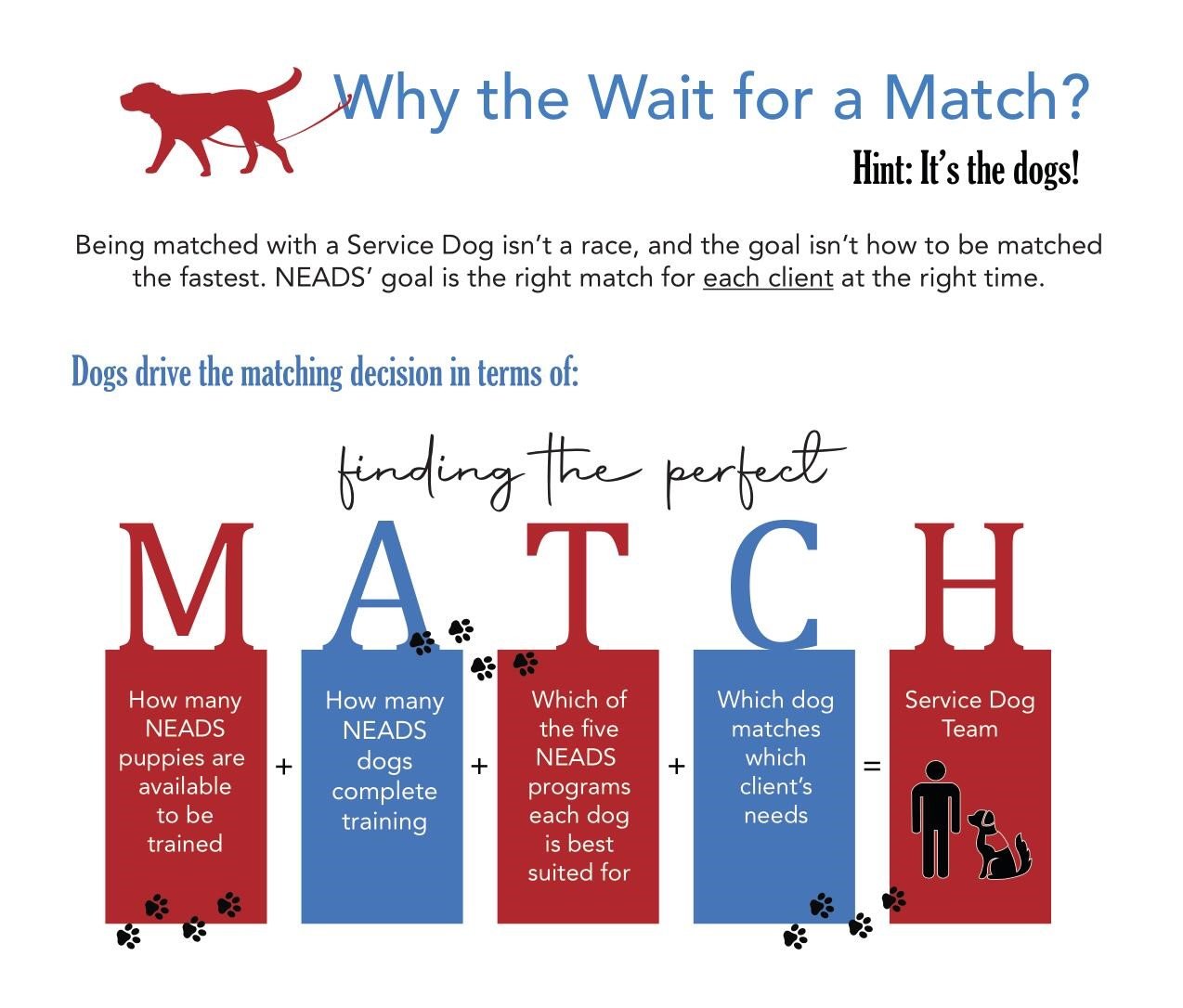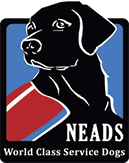Explaining wait-time to donors
As client fundraisers, many of you have become very skilled at discussing NEADS with donors and encouraging them to donate. At times, donors will question why you haven’t been matched with a Service or Assistance Dog yet. This is an understandable question and one that many clients do encounter, especially once they’ve hit their fundraising goal. The best way to respond to these questions is to make it clear from the beginning that the fundraising process and the matching process are two separate things, and matches are made only when the right dog is found, not when a client reaches their fundraising goal.
Talking to donors about the matching process can sometimes be a challenge. As you know, NEADS has a unique and complex process by which we match the right Service or Assistance Dog, with the right client. Our matches are not based on a 1st come – 1st served model. Instead, we take extra care to be sure that the dog a client is eventually matched with is truly the perfect fit for them. This means that wait times can be unpredictable, and sometimes donors become inpatient waiting to hear that a match has been made.
One of the most effective ways to communicate with donors regarding your fundraising progress, and your wait-time for a match, is by posting regular updates on your fundraising page. When someone donates to your campaign, and then hears nothing from you for months on end, they can become concerned. This problem is easily solved by posting updates that include info. about NEADS, especially info. regarding matching.
Below you will find common questions that donors ask and some examples of responses. You can also direct donors to the Client Fundraising FAQs on our website, to this I Got the Right Match blog post and you also can send them this flyer which explains more about how we go about matching clients with dogs. If you encounter a donor that is particularly confused, or has more questions than you are comfortable answering, please don’t hesitate to send them my way. I am always happy to talk to donors and answer any questions that they may have.
You hit your fundraising goal already. Why do you not have a dog yet?
The matching process is entirely dependent on the dogs themselves. NEADS would never want to match a client with a dog simply because they’ve completed their fundraising. That wouldn’t be fair to the client or to the dog. For this reason, the fundraising process and the matching process are kept separate. When the right dog is found for a client, the match will be made regardless of where the client is at with their fundraising campaign (provided the client has demonstrated commitment to reaching their fundraising goal). This means that some clients may be matched while they are still fundraising, and others will be matched after they have completed their campaign.
Why is it taking so long to find the right dog?
The wait time for the right dog can be long, but it is well worth it to be sure that a client will be able to work effectively with that dog, and that both parties will benefit from the work that they do together. A client and their Service Dog must be able to work together as a team, for many years. It is imperative that the team functions well together.
How can the dogs drive the match?
This question gets asked frequently and many clients aren’t sure how to respond to it. You will find some examples below of how the dogs themselves factor into the matching process. These are a few of the many considerations that are taken into account when selecting the right dog for a client.
Lifestyle
NEADS dogs are trained to be comfortable in just about any situation. However, just like humans, dogs have their own personalities and preferences. For instance, a dog that prefers the hustle and bustle of living in a city may not be as happy, or work as effectively, if they were placed with a client who lived in a sleepy suburb.
Temperament
Some clients want a dog that likes to cuddle up with them and show affection, so NEADS wouldn’t place a dog with them that isn’t much of a fan of physical affection. Another client may want a dog that is very playful and has lots of energy, so it wouldn’t be a good match if that client received a dog that would rather relax and doesn’t enjoy lots of activity.
Physical Stature
A client that needs assistance with light switches, and open-door buttons, would need a dog that is tall enough to reach those items. If a client drops things frequently, or needs assistance getting items from the fridge, their dog would need to be strong enough to retrieve those items without it being overly burdensome on them physically.

